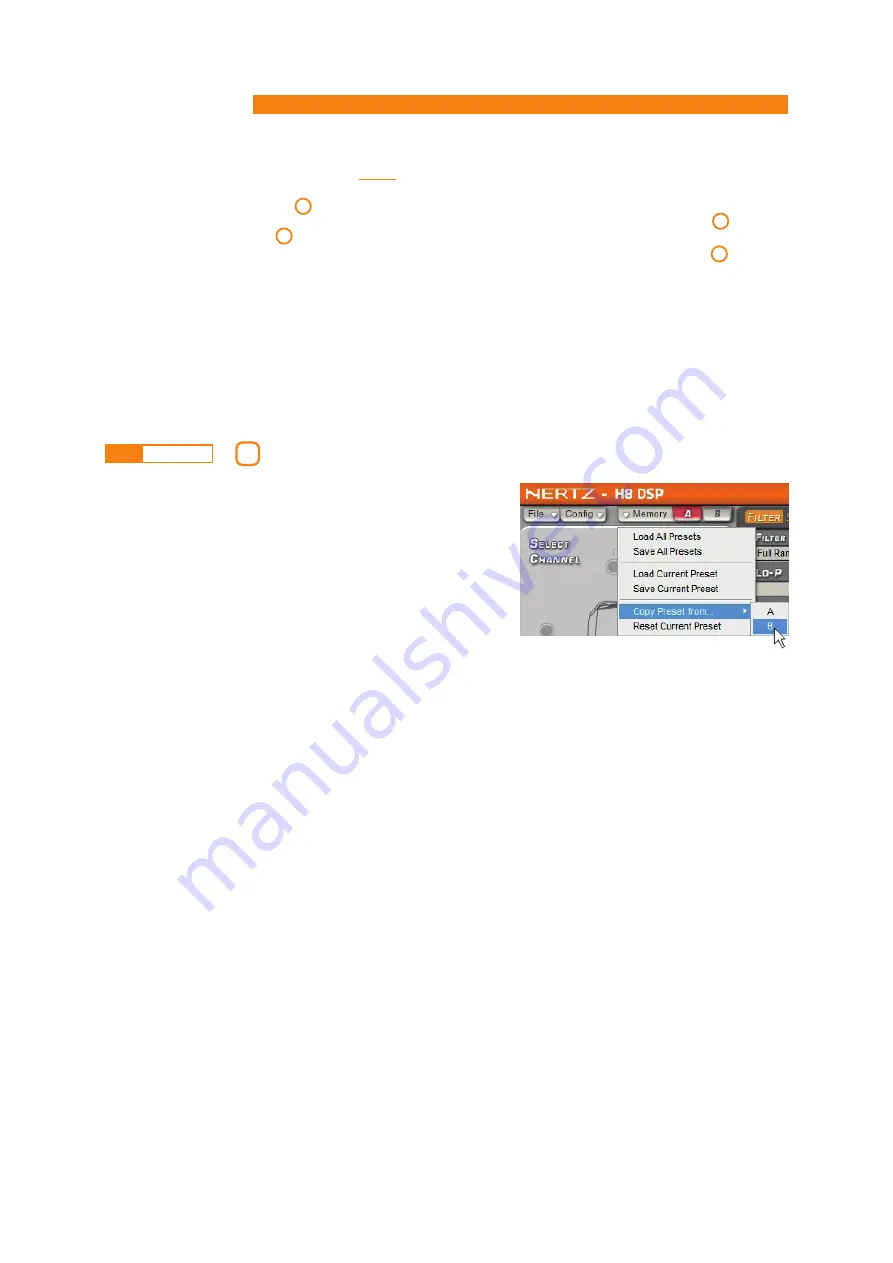
H8 DSP
Digital Interface Processor
User’s manual
11
6
2
2
4
8
40
Remark:
This procedure leads to calibrate the system at “zero dB undistorted”. This is not always the best solution, since
a loss in dynamic range may occur, if a track that has been registered at a lower level or with lower dynamic range
than the track used for the setup is being played. A good compromise needs to be found, depending on the listener.
The
H8 DSP
uses memory
A
by default for the system’s configuration;
however, it also offers the possibility to store and recall two memories
(
A, B
). By pressing the
MEMORY
button on the main menu, different
functions are available for the featured presets.
The following functions are available:
-
Load All Presets:
it loads both memories (A/B) from a previously
saved file (.prs format).
- Save All Presets:
it saves both memories (A/B) in a file
that can be recalled (.prs format).
- Load Current Preset:
it loads a previously saved memory
(.pro format) by overwriting the memory currently in use.
- Save Current Preset:
it saves the memory currently in use in a
file that can be recalled (.pro format).
- Copy Preset From:
it copies the content of one memory into the
current memory.
- Current Preset Default:
it restores the crossover and equalization
default values that would be suggested at the end of the setup
procedure.
The following data are stored in each memory:
-
the filter settings for each channel;
-
the time delay settings for each channel;
-
the equalization settings for each channel;
-
the output levels of each channel;
-
listening point markers.
We recommend that you copy the parameters entered in the memory
currently in use into the memory that is not being used.
These memories can be recalled through the DRC. If some memories
are not saved, they will be configured according to the default
settings.
8.14
MEMORY
c-
Set the desired output equalizations
(see 8.12)
.
d-
Insert a CD with a highly dynamic track.
e-
Select the “Link” function , move the slider and increase the output channels level until possible clipping
occurs; in this case move the slider back to at least 2-3 dB (check the value on one of the displays ).
f-
Increase the “Volume” to the maximum undistorted level taking it close to “0” dB.
g-
In case the signal is highly distorted with the Master Volume at “0” dB, decrease the output levels . If, on the
contrary, no distortion occurs, increase the amplifiers sensitivity until the first distortion symptoms will
appear: in this way, the whole available undistorted power is obtained.




















